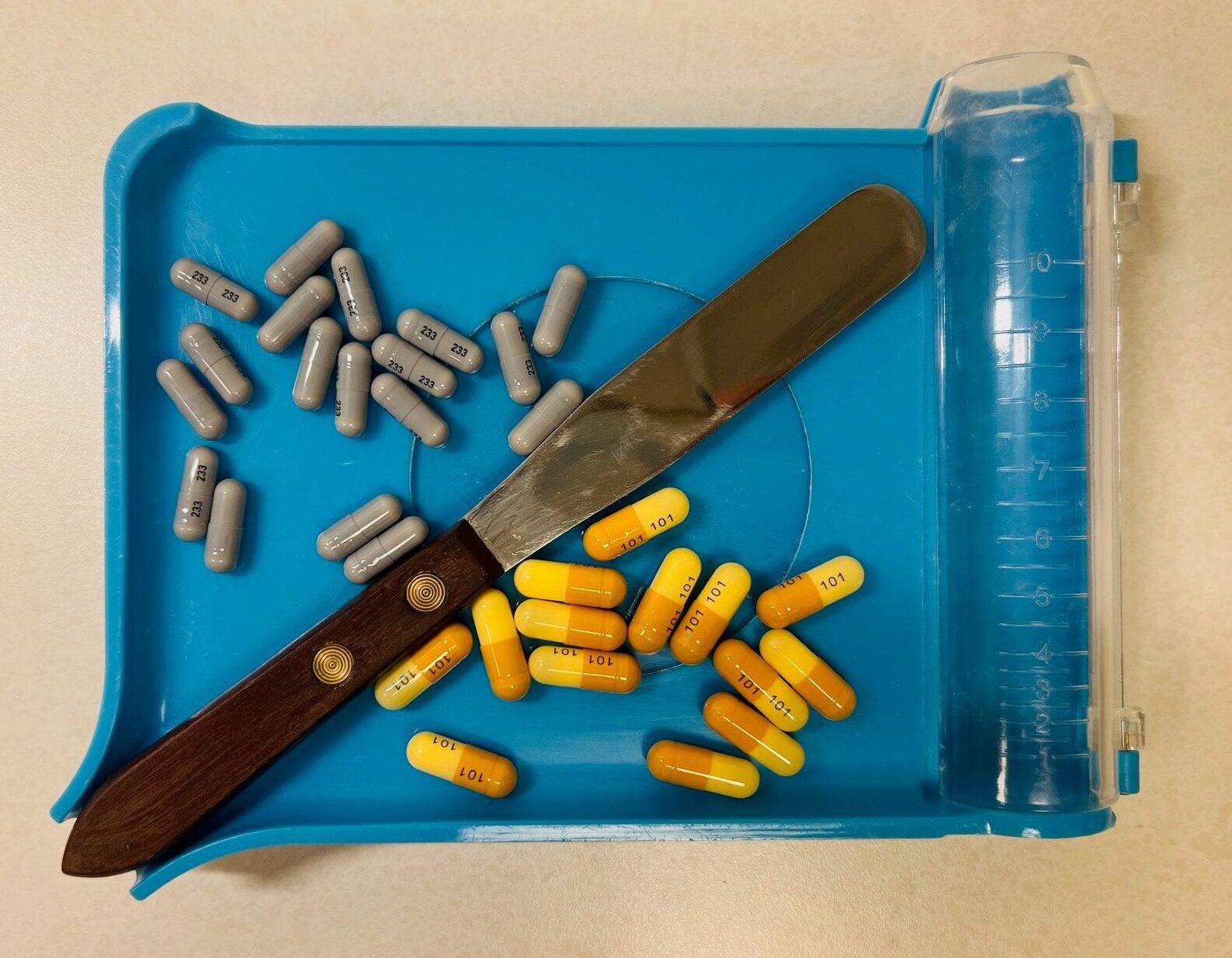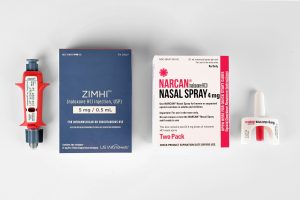Nitrofurantoin: Macrobid vs Macrodantin

Nitrofurantoin is an antibiotic used to treat urinary tract infections (UTIs). Macrobid and Macrodantin are the brand names of nitrofurantoin that are available in the United States. They each contain a different formulation of the drug, but have similar clinical effects. Macrodantin contains only nitrofurantoin macrocrystals, while Macrobid contains both nitrofurantoin monohydrate (75%) and nitrofurantoin macrocrystals (25%).
The treatment duration for UTI with both Macrobid and Macrodantin is typically between 5-7 days, but dosage frequency is different between the two medications. Macrobid is given two times a day, while Macrodantin is given four times a day. The nitrofurantoin macrocrystals dissolve and absorb more slowly than the nitrofurantoin monohydrate, while the nitrofurantoin monohydrate forms a gel matrix when exposed to gastric fluids. The gel matrix releases the nitrofurantoin over time, which is why Macrobid can be given twice a day. Both forms should be taken with food to improve drug absorption1.
Macrobid may be a better choice for treatment of UTIs in older adults since it is dosed less frequently than Macrodantin. Older adults may have cognitive impairment or difficulty swallowing, so less pill burden is always preferred. However, Macrobid capsules cannot be opened and sprinkled on food, while Macrodantin capsules can. There are also some differences in which bacteria each one covers.
Nitrofurantoin has some contraindications (see table below), and it is always important to check safety prior to starting medications. Important information and differences between Macrobid and Macrodantin are highlighted below:
| Macrodantin | Macrobid | |
| Active Ingredient | Nitrofurantoin macrocrystalline | Nitrofurantoin monohydrate (75%) and macrocrystalline (25%) |
| Dosage Forms | 25 mg, 50 mg, and 100 mg capsules | 100 mg capsules |
| Indications Approved by FDA | UTIs due to susceptible strains of:
| Only for acute uncomplicated UTIs due to susceptible strains of:
|
| NOT Indicated for | Not active against most strains of Proteus species or Serratia species.
Pyelonephritis or perinephric abscesses | |
| Dosing for Adults and Children >12 years of age | -Acute, uncomplicated cystitis: 50-100 mg every 6 hours for 5 days (females) or 7 days (males) -Continuous prophylaxis for recurrent infection: 50-100 mg at bedtime (duration typically 3-6 months) | -Acute, uncomplicated cystitis: 100 mg capsule two times a day for 5 days (females) or 7 days (males) -Off-label for continuous prophylaxis for recurrent infection: 50-100 mg at bedtime (duration typically 3-6 months) |
| Dosing for Elderly | -Refer to adult dosing (pay close attention to renal function) -Considered a potentially inappropriate medication in older adults due to increased risk for adverse effects– especially when given long-term (Beers Criteria) | |
| Contraindications |
| |
| Adverse reactions | Significant adverse reactions:
Other adverse reactions:
| |
| Clinical Pearls |
|
|
*Note that while this is contraindicated in CrCl < 60 ml/min per the manufacturer, some data shows that nitrofurantoin may be safe and effective for short-term treatment of uncomplicated UTI is patients with CrCl between 30-60ml/min. Practitioners should use their clinical judgement on a case-by-case basis*
Written by: Jieun Choi, PharmD 2023
Photo by: Megan Holland, PharmD
References
- Macrodantin (nitrofurantoin macrocrystals). fda.gov. Revised January 2009. Accessed November 8, 2022. https://www.accessdata.fda.gov/drugsatfda_docs/label/2021/016620Orig1s076lbl.pdf.
- Macrobid (nitrofurantoin monohydrate/macrocrystals) capsules. fda.gov. Revised January 2009. Accessed November 8, 2022. https://www.accessdata.fda.gov/drugsatfda_docs/label/2009/020064s019lbl.pdf.
- Substitutions for propoxyphene; Macrobid versus Macrodantin. JAAPA 24(2):p 16, February 2011.



